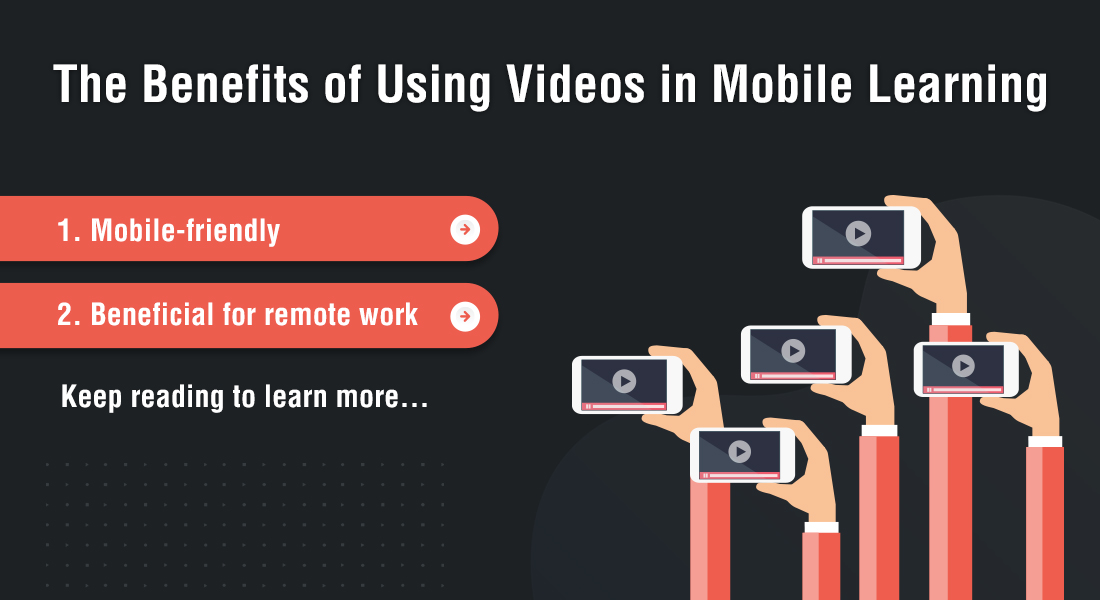Still Not Using Mobile Learning? 5 Reasons Why You Must!

Corporate training is an evolving domain with training managers constantly on the lookout for newer and more effective methods to gain better returns on employee training. Mobile learning can be considered one of the most effective training strategies to maximize learning outcomes. More than 65% of users around the world have access to a smartphone (or a handheld smart device) and to the Internet. This blog will give you insights into the benefits of mobile learning and why you should include it in your training at the earliest.
There is a huge gap between most training and its implementation, resulting in reduced training outcomes. On one hand, learners tend to forget almost 70% of what they have learned within the first 24 hours after training. On the other, providing the complete training a second time is not a very practical solution as it is a very time- and resource-dependent process.
Mobile learning is delivered on learners’ personal handheld devices and leverages the array of hardware and software backed features to provide them a truly ‘mobile’ learning experience. According to a CNBC report, around three quarters of the global population will use smartphones to access the Internet by 2025.
Mobile Learning for Corporate Training
Use it ASAP because it:
- Provides better opportunities for self-paced learning
- Helps learners achieve learning milestones quicker
- Is best suited for providing just-in-time training
- Supports a wide variety of learning strategies
- Makes it possible to provide faster updates and feedback
Mobile learning or M-learning is very similar to eLearning in some aspects, and very different in others. Like eLearning, it is a virtual, online, and technologically backed learning experience. But unlike most eLearning, it is more flexible, informal, and a quicker way to impart training. Besides, courses are also short, including only the most relevant information for a quick learning experience.
Mobile learning is not just a buzzword in the eLearning industry of the 21st century; it is also one of the fastest growing strategies in terms of popularity. Let’s look at the top five reasons why you must shift to mobile learning ASAP.
5 Reasons Why You Should Go for Mobile Learning ASAP
1. Mobile Learning Facilitates Better Self-Paced Learning
Learners forgetting what they have learned in training is a big disadvantage for organizations. Mobile learning helps provide learners with small, bite sized refresher content and mini modules that cater to specific topics and themes. Plus, being ‘mobile’ in nature, it can be accessed by learners anywhere and at any point in time.
Small learning resources complement the whole ‘mobile’ learning experience. Handheld devices anyway come with smaller screens. Besides, being battery operated, it is neither possible nor feasible to have full length eLearning courses on them. Therefore short learning modules work best for mobile learning as they can be completed faster and at the learners’ own pace, not restricted by limitations of time or space.
2. Mobile learning Helps Achieve Learning Milestones Faster
With mobile learning, the entire learning module can be divided into smaller units. Learners can complete these smaller modules faster than larger eLearning modules. Needless to say, completing a module gives learners a sense of achievement, making them more interested and motivated. It also makes evaluating learners and tracking progress easier.
Shorter modules are more focused, and provide only the required information. Besides, these courses themselves are highly customizable and can be quite diverse, including videos, animations, flashcards, infographics, applications, quizzes, and mini games. This makes for a highly engaging learning experience.
3. Mobile Learning Makes Just-In-Time (JIT) Training Easier
Not everything that has been learned in training is retained in the memory. Just-in-time training is a focused training strategy that provides very specific information to the learner when it is needed the most. Going through a complete eLearning module at the workplace when you are trying to solve a problem or perform a task does not make sense. On the other hand, mobile learning aims to provide this type of quick and instantaneous training.
Provide smaller units with concise and easy to understand information, and voila, you have unlocked a foolproof method of delivering only what is required on a need-to basis. Mobile devices can be used to deliver important information (customer details, product specifications and features, etc.) just before the salesperson meets the customer.
But though just-in-time training is very useful, it cannot replace primary training. For instance, a topic that is too complex or new is not suitable for JIT. JIT is primarily meant as refresher training at the point of need. Nonetheless, it works really well in providing focused pieces of information for ‘pull’ learning, a learner-centric approach (not content-centric). Thus, mobile learning becomes the perfect candidate to offer this.
4. Mobile Learning Supports A Wide Variety of Learning Strategies
Handheld devices are nowadays packed with cutting edge hardware and software. For example, a smartphone’s in-built gyroscope not only shows direction, but also enables virtual reality applications to function. So why not use it to design a training strategy that leverages this technology to run a small 360-degree interactive video?
There are no limits to innovation. For more interactive eLearning, you need to provide learners with the opportunity to explore without limits. Mobile learning being compact yet impactful, ensures that learners utilize the full gamut of technology available to them.
Two other learning strategies that work well with mobile learning are social learning and game-based learning. A handheld device is the first medium for social contact with people, and the vast array of applications like Facebook, Twitter and Skype, which normally keep people connected, are also leveraged to help learners connect and learn collaboratively.
On the other hand, mobile devices being tactile, are well suited for mini games and interactive applications. Gamification of learning works really well for online employee training, and mobile platforms can provide learners with a better learning experience with games and interactivities.
5. Mobile Learning Ensures Quick Updates and Instant Feedback
Of all the perks of mobile learning, its ability to provide quick updates is a game changer.
No learning is ever complete without constructive feedback. However, evaluating and providing feedback for a larger training unit can be quite time consuming. Everything about mobile learning facilitates not only faster completion of learning modules, but also evaluation and providing feedback. Instant feedback is very helpful for learners to identify their mistakes and rectify them.
It’s a Wrap
So, there you have it, five top reasons why you should immediately include mobile learning in your training arsenal. It has speed, efficiency as well as reliability, and can benefit your training immensely. Its compact nature and not-so-formal approach make it an interesting and effective strategy for employee training.
If you wish to know more about mobile learning and how to leverage the available handheld technology for your organizational training requirements, consider this handy eBook for more detailed insight.





